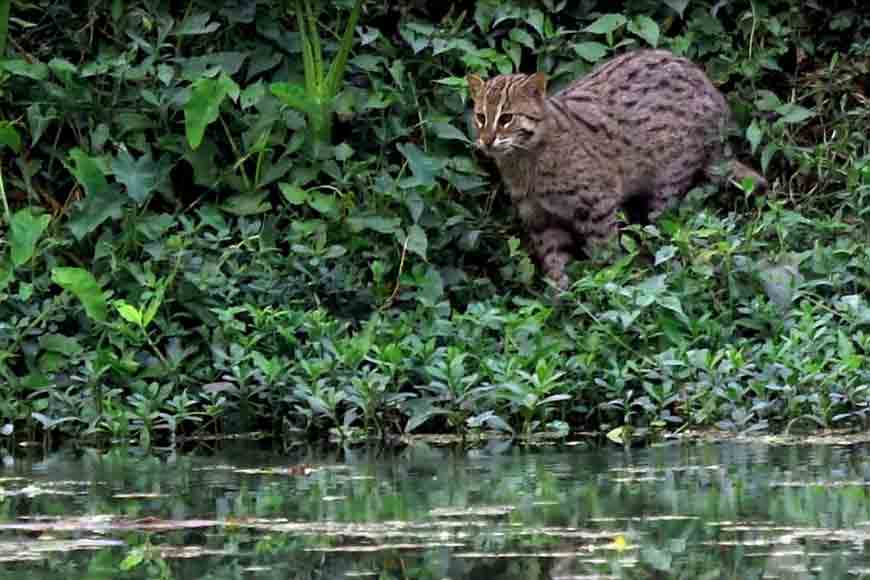Fishing Cat- Bengal’s state animal

About two years ago, the state government formally announced Fishing Cat as the State Animal of West Bengal. However, the common man in the state is unaware of this fact and there is considerable apathy towards the cat amongst policy makers. The logo of the Royal Bengal Tiger is displayed on all government advertisements, but there has been no scientific study and survey to locate the habitat and number of fishing cats in the state so far.However, this situation might soon change as the government has scheduled a full-fledged census to find and record all details about the fishing cat. The project will begin on November 17 and will continue for two years to complete the survey. The International Union for Conservation of Nature (IUCN) has already listed fishing cats under endangered species category. Since 2016, it is listed as ‘Vulnerable’ on the IUCN Red List.
The fishing cat (Prionailurusviverrinus) is a medium-sized wild cat of South and Southeast Asia. In the past fishing cats thrived in West Bengal and lived in large numbers in the Sunderbans and other marshlands along city fringes.Strangely, policy-makers have branded marshlands as ‘wastelands,’ and hence these areas are subjected to degradation and conversion, especially outside protected areas. In West Bengal alone, there has been a steady decline of marshlands, around 44 per cent in the last 15 years! Fishing cat population has been threatened by destruction of wetlands. However, they can still be found in various parts of Howrah and Hooghly districts.
As marshlands continue to decline, the fishing cats often encroachinto farmlands, hunting for foodand attack poultry. This leads to merciless retaliation by villagers who kill the cats.A team under Professor Gautam Saha of Zoology department, Calcutta Universityis all set to begin work on the survey. Professor Saha and his team will be visiting different parts of North and South Bengal to witness the fishing cats and click photographs and try to locate the unreserved areas where they still thrive. After zeroing in the areas, in the next phase a more detailed and extensive study will be initiated. The cats are usually sighted in Domjur and Panchla in Howrah district and Dankuni in Hooghly district other than Sunderbans. Once the survey is done, hopefully the government can take proactive steps to ensure their safety.










